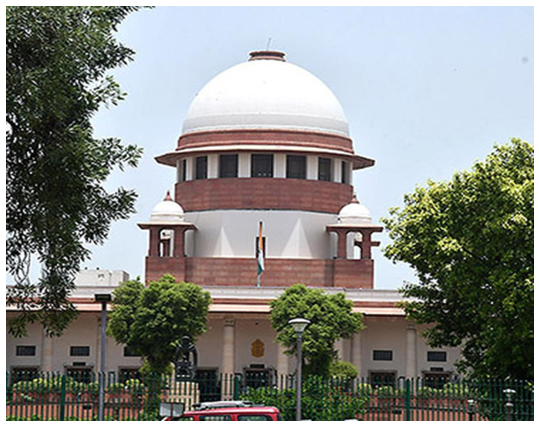- Courses
- GS Full Course 1 Year
- GS Full Course 2 Year
- GS Full Course 3 Year
- GS Full Course Till Selection
- Online Program
- GS Recorded Course
- NCERT (Recorded 500+ Hours)
- Polity Recorded Course
- Geography Recorded Course
- Economy Recorded Course
- AMAC Recorded Course
- Modern India, Post Independence & World History
- Environment Recoded Course
- Governance Recoded Course
- Science & Tech. Recoded Course
- International Relations and Internal Security Recorded Course
- Disaster Management Module Course
- Ethics Recoded Course
- Essay Recoded Course
- Current Affairs Recoded Course
- CSAT
- 5 LAYERED ARJUNA Mentorship
- Public Administration Optional
- ABOUT US
- OUR TOPPERS
- TEST SERIES
- FREE STUDY MATERIAL
- VIDEOS
- CONTACT US
GOVERNOR’S POWERS IN DISMISSING A MINISTER
GOVERNOR’S POWERS IN DISMISSING A MINISTER
06-07-2023

Latest Context
A constitutional controversy has been generated by the governor of Tamil Nadu's recent move to fire and suspend a minister. Later, the Governor changed his mind and decided to suspend the dismissal order.
What power does the governor have to remove ministers?
-
Article 164:
- According to Article 164 of the Constitution, the Governor appoints the Chief Minister without consulting anybody else. But he only names the specific Ministers with the Chief Minister's approval.
- According to the Article, the Governor is not permitted to choose any Minister of his choosing. Because of this, the Governor may only fire a Minister on the Chief Minister's suggestion.
-
Reference to the Government of India Act, 1935:
- The Government of India Act, 1935, which set the rules for colonial government, stipulated in Sections 51(1) and 51(5) that the Governor had complete freedom in selecting and removing Ministers.
- But with India's independence, the Governor's position changed to that of a constitutional leader who only relied on the guidance and counsel of the Council of Ministers, which was presided over by the Chief Minister.
-
Constitutional Limitations on Governor's Discretion:
- The Chief Minister, who embodies popular will, has the authority to appoint or remove a Minister.
- During the deliberations in the Constituent Assembly, B.R. Ambedkar firmly asserted that the Governor is not granted any autonomous executive powers under the Constitution.
- The phrase "pleasure of the Governor" is only used in relation to the official act of issuing dismissal orders upon the Chief Minister's recommendation under Article 164 of the Constitution.
- Note: The Government of India Act, 1935, which established the theory, has been included into the Indian Constitution. According to Section 51 of the Government of India Act, 1935, the Governor has the authority to appoint and remove Ministers. However, while the Constitution's Article 164 was being written, the phrases "chosen," "dismissal," and "discretion" were left out. It was a critical omission that amply demonstrates that the Constitution did not grant the Governor the power to select or remove a particular Minister.
What are the Governors' Powers as Clarified by the Court?
- In Shamsher Singh and Anr vs State of Punjab (1974): The SC ruled that, save in a few limited circumstances, the President and Governor, who are granted executive authority by the Constitution, should only act on the advice of their Ministers.
-
Nabam Rebia vs Deputy Speaker (2015):
- The SC has declared that elected governments cannot be overthrown by governors. It emphasised that the Governor's discretionary powers are restricted to the terms of Article 163(1) and reiterated the earlier decision in the Shamsher Singh case.
- In accordance with Article 163(1), the Governor must be assisted and advised in the performance of his duties by a council of ministers, headed by the Chief Minister, unless the Governor is compelled by this constitution or another provision to perform all or a portion of his duties at his discretion.
Concerns Related to the Issue of Dismissal of Minister
- Constitutional Misadventure: Removing a Minister is a moral decision, not something that must be done per law. A constitutional error was committed when the Governor dismissed a Minister without the Chief Minister's approval.
- Sets Wrong Precedent: Dismissing a minister of a government without the Chief Minister of the State's suggestion is a precedent-setting and purposefully provocative conduct that has the potential to undermine State governments and jeopardise the federal system.
- Collapse of Constitutional System: The whole constitutional framework will disintegrate if Governors are permitted to utilise their authority to fire specific Ministers without the Chief Minister's consent and advice.
Conclusion
A legislature should lay forth precise rules for the governor's use of his or her authority.
As a parliamentary democracy, India should respect the authority of the Parliament, and the democratically elected State Legislature should play a comparable function and be given equal weight.
Must Check: IAS Coaching Centre In Delhi


